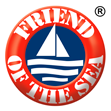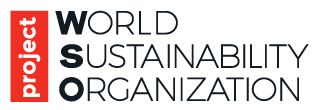Friend of the Sea provides Carbon Offset solution to the Seafood and Aquaculture Industry
Friend of the Sea has recently made available to the seafood industry and retailers a Seafood Carbon Footprint Calculator which estimates how many kilos of CO2 emissions are generated by a kilo of seafood on the shelves. The Calculator applies fuel efficiency data known for most commercial fisheries and aquaculture, but any other available and more specific fuel efficiency data can be inputted. Users can indicate the distance travelled by the raw material and end product (air, sea or road) thus adding up the transport generated CO2 emissions.
“Industry and retailers want to know their seafood carbon footprint,” – comments Dr Paolo Bray, Director of Friend of the Sea – “but fisheries’ Catch per Unit Effort may vary strongly over time, making seafood specific CO2 emissions tracking impossible. The Calculator represents a break-through solution, as it applies best available standardized data and delivers reliable estimates for companies’ good use”.
The most comprehensive life-cycle analysis studies suggest that the fishing stage itself is the main contributor of environmental impacts in the production of seafood, normally representing over 90% of CO2 emissions and global warming potential. The remaining 10% represented by processing, distribution and consumption.
Fuel efficiency and CO2 emissions vary greatly between different fisheries. To purse seine a kilo of anchovies or sardines 0,7 kilos of C02 are produced. To bottom trawl a kilo of shrimps, up to 26 kilos of CO2. The same product, such as tuna, could cause different CO2 emissions if caught by pole and line (3.1 kilos), purse seines (4,5 kilos) or longlines (9,8 kilos). Lowest emissions for salmon occur when it is purse seined (1,2 kg) rather than driftnetted (5 kg) or trolled (6,4 kg).
Transport emissions can strongly contribute to carbon footprint, the more the seafood is distributed long distance and by air freight. As a general indicator, each 650 kilometers of air transport, or 4000 km of road transport or 8000 km of sea transport, will increase your seafood carbon footprint by an extra kg of CO2 per kg of product. In other words, while shipping seafood from the other side of the world would increase its carbon footprint by ‘only’ 3,4 kg of CO2, flying it would increase it by almost 30 kg of CO2 (per kg of product).
“We realize it is very difficult for companies in the seafood industry to reduce their main causes of CO2 emissions – fisheries and transport.” – adds Bray – “Companies can now reduce their emissions by purchasing Friend of the Sea Offsets. Offsets consist in funding certified projects such as forestry, renewable energy or carbon capture and storage. Consumers will soon expect products to be ‘carbon neutral’ or even reduce the greenhouse effect! The latter would imply companies to purchase Offsets in excess”.
Yearly Offset costs for 1.000 Tons of seafood could vary significantly for different species and fishing methods. Purse seined sardines, anchovies, mackerels, herrings, crabs, clams, mussels, and salmon or handlined groundifsh could be offset with a 5.000 Euros per year investment. Almost 100.000 Euros would be needed to offset shrimp trawling.
To immediately receive via email, at no cost and no engagement, the Friend of the Sea Seafood Carbon Footprint Calculator, send an email now with your name and company to Offsetco2@friendofthesea.org .



